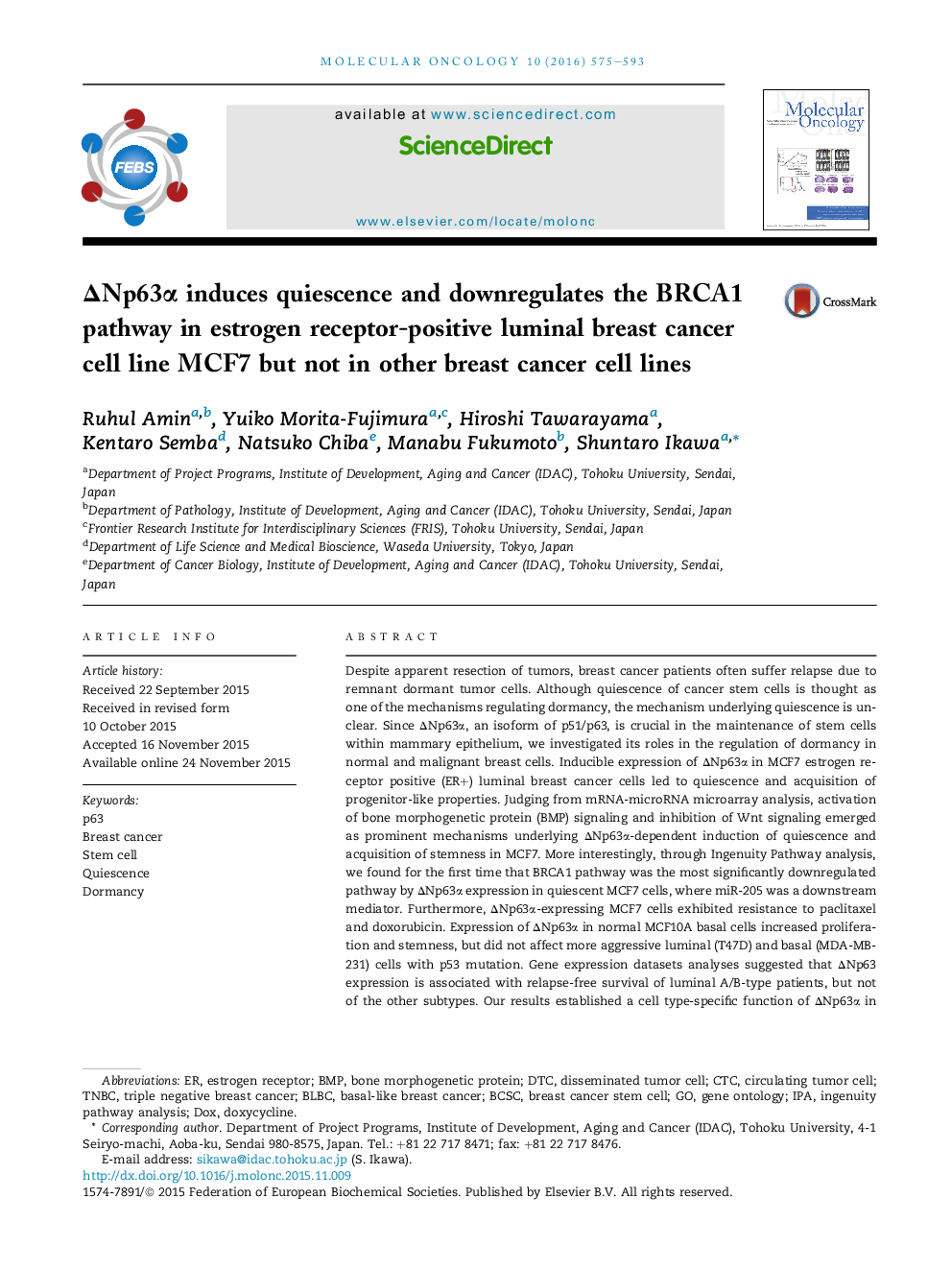| Article ID | Journal | Published Year | Pages | File Type |
|---|---|---|---|---|
| 10914564 | Molecular Oncology | 2016 | 19 Pages |
Abstract
Despite apparent resection of tumors, breast cancer patients often suffer relapse due to remnant dormant tumor cells. Although quiescence of cancer stem cells is thought as one of the mechanisms regulating dormancy, the mechanism underlying quiescence is unclear. Since ÎNp63α, an isoform of p51/p63, is crucial in the maintenance of stem cells within mammary epithelium, we investigated its roles in the regulation of dormancy in normal and malignant breast cells. Inducible expression of ÎNp63α in MCF7 estrogen receptor positive (ER+) luminal breast cancer cells led to quiescence and acquisition of progenitor-like properties. Judging from mRNA-microRNA microarray analysis, activation of bone morphogenetic protein (BMP) signaling and inhibition of Wnt signaling emerged as prominent mechanisms underlying ÎNp63α-dependent induction of quiescence and acquisition of stemness in MCF7. More interestingly, through Ingenuity Pathway analysis, we found for the first time that BRCA1 pathway was the most significantly downregulated pathway by ÎNp63α expression in quiescent MCF7 cells, where miR-205 was a downstream mediator. Furthermore, ÎNp63α-expressing MCF7 cells exhibited resistance to paclitaxel and doxorubicin. Expression of ÎNp63α in normal MCF10A basal cells increased proliferation and stemness, but did not affect more aggressive luminal (T47D) and basal (MDA-MB-231) cells with p53 mutation. Gene expression datasets analyses suggested that ÎNp63 expression is associated with relapse-free survival of luminal A/B-type patients, but not of the other subtypes. Our results established a cell type-specific function of ÎNp63α in induction of quiescence and downregulation of the BRCA1 pathway which suggested a role of ÎNp63α in the dormancy of luminal breast cancers.
Keywords
Related Topics
Life Sciences
Biochemistry, Genetics and Molecular Biology
Cancer Research
Authors
Ruhul Amin, Yuiko Morita-Fujimura, Hiroshi Tawarayama, Kentaro Semba, Natsuko Chiba, Manabu Fukumoto, Shuntaro Ikawa,
